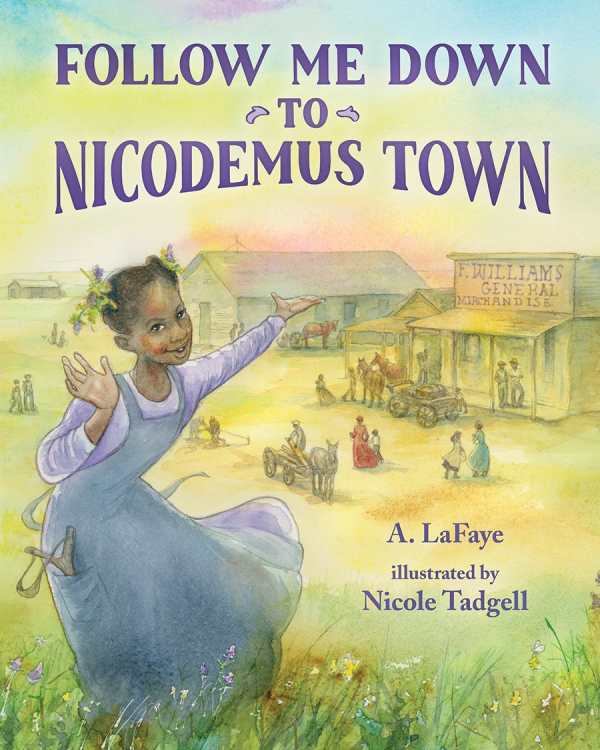Deepest thanks for these wonderful reviews of our new book!

Forward Reviews
In this story inspired by the many African American pioneers who forged new communities in the Midwest following the Civil War, young Dede’s hardworking family leaves behind a life of indentured servitude for the promise of free farmland in the heart of the prairie. The historic town of Nicodemus, Kansas, springs to life through expressive artwork done in softly fluid lines and hues, conveying all of the hope and joy of the movement.
Reviewed by Pallas Gates McCorquodale

KIRKUS REVIEW
A little girl and her family join
the Kansas land rush.
The cover welcomes readers into this story about Dede Patton and her family. Both of Dede’s parents work extra jobs, and Dede shines shoes at the train station, all in hopes of paying off their sharecropping debt so they can move west. But no matter how much they work, they don’t make enough (context on the sharecropping economy is provided in a note). An act of providence changes their fortunes when honest Dede returns a customer’s wallet and receives a monetary reward. Though not remarked upon, the fact that without this windfall the Pattons might never have realized their dream is chilling. The lovely, warm watercolor illustrations highlight the beauty of the prairie, particularly the wide expanse of grass and sky. In Kansas, the Pattons stake their land claim, but winter is harsh. Thankfully, when food and fuel run low, Ni-u-kon-ska (Osage) neighbors lend aid. Eventually more people arrive, African-American like the Pattons; their settlement becomes a town, and the Pattons’ dream of holding the deed for their land is realized. The closing note acknowledges the displacement of the Ni-u-kon-ska people—another opportunity for exploration. That the many all-black settlements on the prairie have been whitewashed out of U.S. history makes this book an important one.
Visually charming, enjoyable, and educational. (Picture book. 4-9)
The cover welcomes readers into this story about Dede Patton and her family. Both of Dede’s parents work extra jobs, and Dede shines shoes at the train station, all in hopes of paying off their sharecropping debt so they can move west. But no matter how much they work, they don’t make enough (context on the sharecropping economy is provided in a note). An act of providence changes their fortunes when honest Dede returns a customer’s wallet and receives a monetary reward. Though not remarked upon, the fact that without this windfall the Pattons might never have realized their dream is chilling. The lovely, warm watercolor illustrations highlight the beauty of the prairie, particularly the wide expanse of grass and sky. In Kansas, the Pattons stake their land claim, but winter is harsh. Thankfully, when food and fuel run low, Ni-u-kon-ska (Osage) neighbors lend aid. Eventually more people arrive, African-American like the Pattons; their settlement becomes a town, and the Pattons’ dream of holding the deed for their land is realized. The closing note acknowledges the displacement of the Ni-u-kon-ska people—another opportunity for exploration. That the many all-black settlements on the prairie have been whitewashed out of U.S. history makes this book an important one.
Visually charming, enjoyable, and educational. (Picture book. 4-9)
Forward Reviews
In this story inspired by the many African American pioneers who forged new communities in the Midwest following the Civil War, young Dede’s hardworking family leaves behind a life of indentured servitude for the promise of free farmland in the heart of the prairie. The historic town of Nicodemus, Kansas, springs to life through expressive artwork done in softly fluid lines and hues, conveying all of the hope and joy of the movement.
Reviewed by Pallas Gates McCorquodale
Disclosure: This article is not an endorsement, but a
review. The author of this book provided free copies of the book to have
their book reviewed by a professional reviewer. No fee was paid by the
author for this review. Foreword Reviews only recommends books that we
love. Foreword Magazine, Inc. is disclosing this in accordance with the
Federal Trade Commission’s 16 CFR, Part 255.

